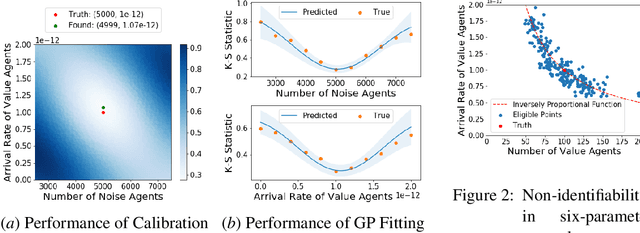Efficient Calibration of Multi-Agent Market Simulators from Time Series with Bayesian Optimization
Paper and Code
Dec 03, 2021



Multi-agent market simulation is commonly used to create an environment for downstream machine learning or reinforcement learning tasks, such as training or testing trading strategies before deploying them to real-time trading. In electronic trading markets only the price or volume time series, that result from interaction of multiple market participants, are typically directly observable. Therefore, multi-agent market environments need to be calibrated so that the time series that result from interaction of simulated agents resemble historical -- which amounts to solving a highly complex large-scale optimization problem. In this paper, we propose a simple and efficient framework for calibrating multi-agent market simulator parameters from historical time series observations. First, we consider a novel concept of eligibility set to bypass the potential non-identifiability issue. Second, we generalize the two-sample Kolmogorov-Smirnov (K-S) test with Bonferroni correction to test the similarity between two high-dimensional time series distributions, which gives a simple yet effective distance metric between the time series sample sets. Third, we suggest using Bayesian optimization (BO) and trust-region BO (TuRBO) to minimize the aforementioned distance metric. Finally, we demonstrate the efficiency of our framework using numerical experiments.
 Add to Chrome
Add to Chrome Add to Firefox
Add to Firefox Add to Edge
Add to Edge